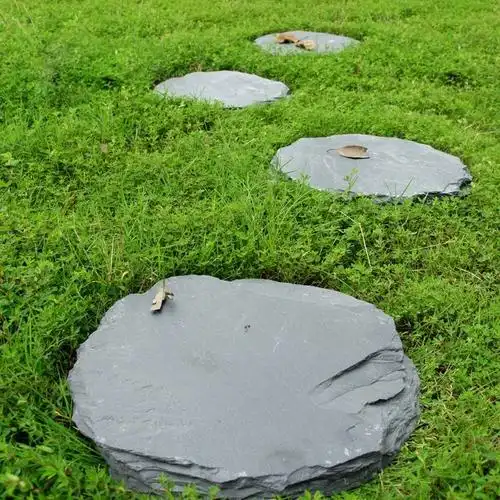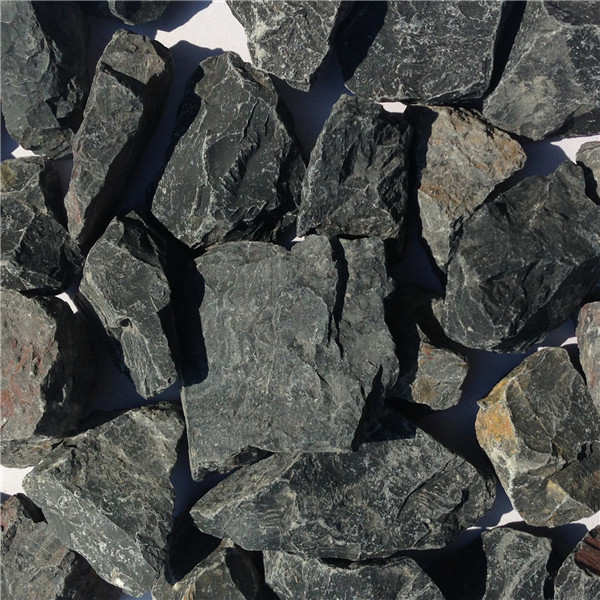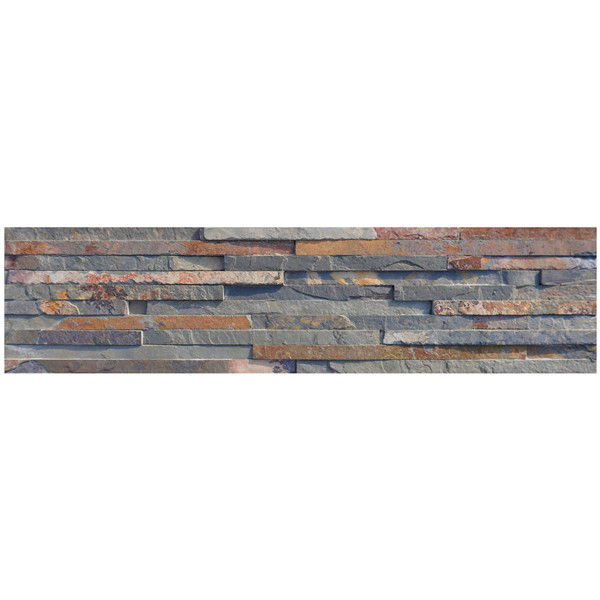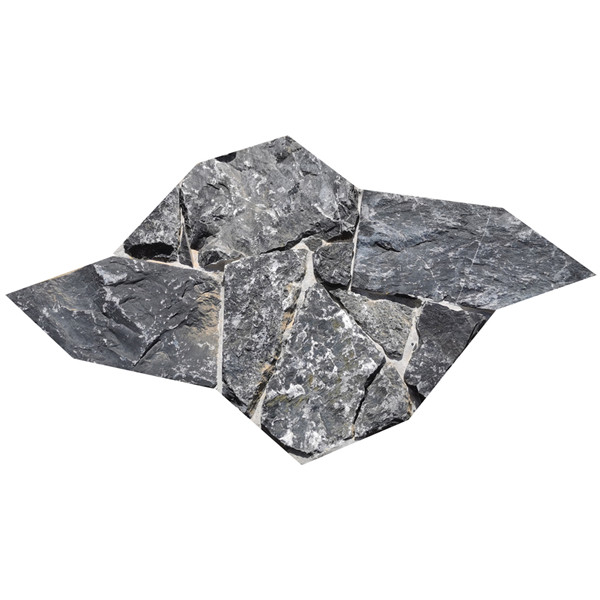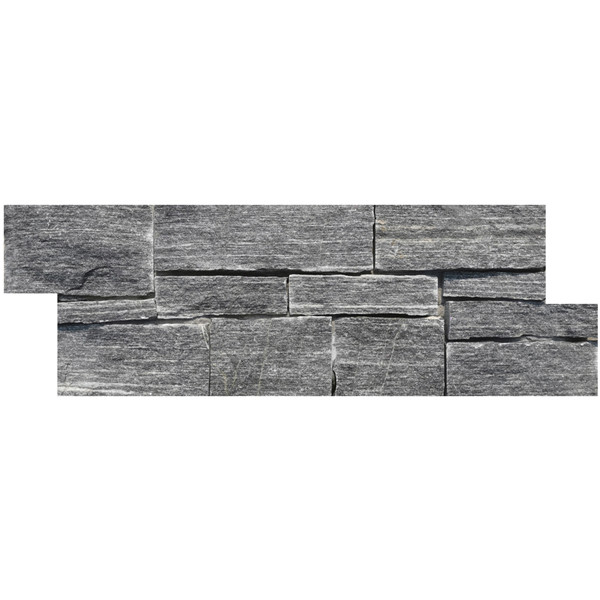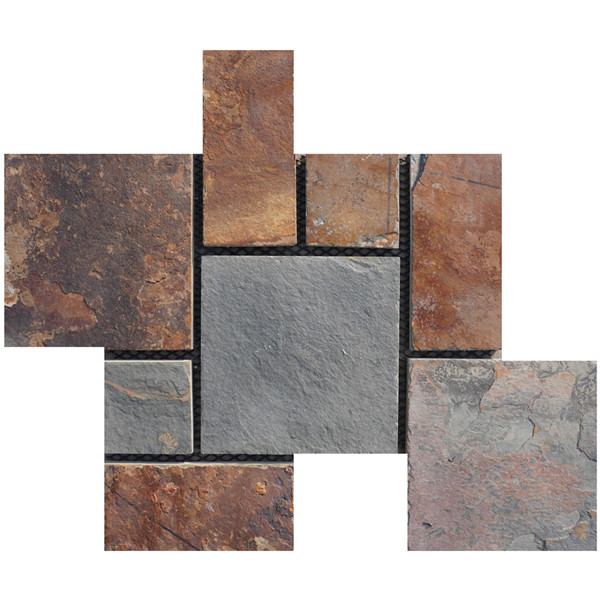
Introduction
What is Stone Veneer?
Stone veneer is a decorative and functional building material that has become increasingly popular for both interior and exterior applications. It’s essentially a thin layer of stone, either natural or manufactured, that can be applied to surfaces like walls, fireplaces, and outdoor living spaces. The allure of stone veneer lies in its ability to replicate the look and feel of full-sized stone without the associated weight and cost. Imagine having the aesthetic appeal of a rustic stone cabin or a sleek modern stone façade without the hassle of dealing with heavy, bulky stones. That’s the magic of stone veneer!
Stone veneer comes in various shapes, sizes, colors, and textures, allowing you to customize the look to suit your personal style and the architectural design of your home or commercial space. Whether you’re aiming for a rustic, traditional appearance or a sleek, contemporary vibe, there’s a stone veneer option that can help you achieve your vision.
Why Choose Stone Veneer?
You might be asking yourself, why should I choose stone veneer over other building materials? Well, let’s break it down. First and foremost, stone veneer provides an unmatched aesthetic appeal. It offers a timeless beauty that can enhance any space, making it look more luxurious and sophisticated. Additionally, stone veneer is versatile; it can be used in a variety of applications, from exterior cladding to interior accent walls and fireplaces.
Another significant advantage of stone veneer is its cost-effectiveness. Compared to full-sized stones, stone veneer is generally more affordable. The reduced weight also means that installation is easier and quicker, which can save you on labor costs. Moreover, stone veneer is durable and requires minimal maintenance, making it a long-lasting investment for your property.
Types of Stone Veneer
Natural Stone Veneer
Natural stone veneer is crafted from real stones that are quarried and cut into thin slices. Each piece retains the unique characteristics of the original stone, including variations in color, texture, and pattern. This authenticity is one of the main reasons why many people prefer natural stone veneer. It brings a piece of nature into your home or commercial space, adding a touch of elegance and charm.
One of the benefits of natural stone veneer is its durability. Since it’s made from real stone, it can withstand harsh weather conditions and resist wear and tear. Natural stone veneer is also relatively low maintenance; occasional cleaning is usually all that’s needed to keep it looking its best.
However, it’s worth noting that natural stone veneer can be more expensive than manufactured options. The cost can vary depending on the type of stone and the complexity of the installation. Additionally, because it’s heavier than manufactured stone veneer, it may require additional structural support.
Manufactured Stone Veneer
Manufactured stone veneer, also known as faux stone or cultured stone, is made from concrete and other materials designed to mimic the appearance of natural stone. Advances in manufacturing techniques have made it possible to create incredibly realistic-looking stone veneers that are almost indistinguishable from the real thing.
One of the main advantages of manufactured stone veneer is its cost. It’s generally less expensive than natural stone veneer, making it a more budget-friendly option. Manufactured stone veneer is also lighter than natural stone, which can make installation easier and reduce labor costs.
Another benefit is the consistency in color and texture. Because it’s manufactured, you can achieve a more uniform look if that’s what you’re after. However, some people feel that this uniformity lacks the charm and character of natural stone.
Manufactured stone veneer is also durable and requires minimal maintenance. However, it may not be as long-lasting as natural stone in extreme weather conditions. It’s important to choose high-quality manufactured stone veneer from reputable brands to ensure durability and aesthetic appeal.
Benefits of Stone Veneer
Aesthetic Appeal
One of the most compelling reasons to choose stone veneer is its aesthetic appeal. Stone veneer adds a touch of elegance and sophistication to any space. Whether you’re looking to create a cozy rustic cabin feel or a sleek modern look, there’s a stone veneer option that can help you achieve your design goals.
The variety in color, texture, and style means that you can customize the look to suit your personal taste and complement your existing decor. For example, you might choose a rugged, uneven stone for a rustic fireplace or a smooth, sleek stone for a contemporary accent wall.
Stone veneer also has a timeless quality that can enhance the curb appeal of your home or commercial property. It creates a sense of permanence and solidity that other materials often lack.
Durability
Another significant benefit of stone veneer is its durability. Both natural and manufactured stone veneers are designed to withstand various weather conditions and resist wear and tear. This makes them suitable for both interior and exterior applications.
Natural stone veneer is particularly durable because it’s made from real stones that have been formed over thousands of years. It can withstand extreme temperatures, moisture, and UV exposure without deteriorating.
Manufactured stone veneer is also durable, though it may not be as long-lasting as natural stone in extreme weather conditions. However, high-quality manufactured stone veneers are designed to be resistant to fading, chipping, and cracking.
Cost-Effectiveness
When it comes to cost-effectiveness, stone veneer offers excellent value for money. While the initial investment may be higher than some other materials like vinyl siding or wood, the long-term benefits make it a worthwhile investment.
Stone veneer is generally more affordable than full-sized stones due to its reduced weight and ease of installation. This can save you on both material costs and labor expenses. Additionally, because it’s durable and requires minimal maintenance, you’ll save on repair and upkeep costs over time.
Easy Installation
One of the standout benefits of stone veneer is its ease of installation. Unlike full-sized stones, which can be heavy and cumbersome to work with, stone veneers are lightweight and easier to handle. This makes the installation process quicker and less labor-intensive.
Many homeowners find that they can tackle smaller projects like accent walls or fireplace surrounds themselves with a bit of DIY know-how. For larger projects or exterior applications, hiring a professional installer can ensure that the job is done correctly and efficiently.
Applications of Stone Veneer
Exterior Walls
One of the most popular applications for stone veneer is on exterior walls. Whether you’re looking to enhance your home’s curb appeal or add a touch of sophistication to a commercial property, stone veneer can create a stunning visual impact.
Exterior stone veneer can be used to cover entire walls or as an accent to highlight architectural features like entryways, columns, or chimneys. It’s also an excellent choice for garden walls or outdoor kitchens, adding an elegant touch to your outdoor living spaces.
Interior Walls
Stone veneer isn’t just for exteriors; it’s also a fantastic option for interior walls. An accent wall clad in stone veneer can become a striking focal point in any room. Imagine walking into your living room and being greeted by a beautiful stone wall—it instantly adds warmth and character to the space.
Interior stone veneer can be used in various rooms throughout your home. Consider adding it to your kitchen backsplash for a unique look or using it to create a cozy reading nook in your bedroom. The possibilities are endless!
Fireplaces
Fireplaces are another prime candidate for stone veneer. Whether you have a traditional wood-burning fireplace or a modern gas insert, cladding it in stone veneer can transform it into a stunning centerpiece for your living room or outdoor patio.
The texture and color of the stones can add depth and dimension to your fireplace surround, creating a cozy and inviting atmosphere. Plus, because stone veneer is heat-resistant, it’s a safe choice for fireplace applications.
Outdoor Living Spaces
Outdoor living spaces are becoming increasingly popular as homeowners look to create comfortable and stylish areas for entertaining and relaxation. Stone veneer can play a significant role in enhancing these spaces.
Consider using stone veneer for outdoor kitchens, fire pits, seating walls, or water features. It adds an element of luxury and sophistication while blending seamlessly with natural surroundings. Plus, because it’s durable and weather-resistant, it’s an ideal choice for outdoor applications.

Choosing the Right Stone Veneer
Color and Texture
Selecting the perfect stone veneer involves more than just picking a color you like. The color and texture should harmonize with your overall design scheme. Do you want a warm, earthy tone to create a cozy ambiance, or are you looking for cool, sleek shades to complement a modern aesthetic?
Consider the natural lighting in the area where you’ll be installing the stone veneer. Natural light can enhance the stone’s colors and textures, adding depth and dimension to your space. If the area lacks natural light, you might opt for lighter shades to brighten the space.
Texture is equally important. Rough, rugged textures can add a rustic charm, making the space feel more inviting and natural. Smooth textures, on the other hand, lend a more contemporary, polished look. The choice between rough and smooth largely depends on your personal style and the atmosphere you want to create.
Style and Design
The style of stone veneer should align with your overall design aesthetic. Are you aiming for a traditional look with classic stones that exude timeless elegance, or are you leaning towards a modern design with sleek, uniform stones?
Consider the architectural style of your home or building. For example, a rustic, country-style home might benefit from irregularly shaped stones with natural variations in color and texture. In contrast, a modern, minimalist home might look best with uniform stones in neutral shades.
Additionally, think about how the stone veneer will interact with other design elements in the space. Will it complement or clash with your existing decor? Make sure to choose a style that enhances the overall look and feel of your space.
Quality and Brand
Not all stone veneers are created equal. Quality is paramount when it comes to durability and aesthetic appeal. It’s crucial to choose high-quality materials from reputable brands to ensure you get the best product possible.
Research different brands and read reviews from other customers. Look for brands that have a track record of producing durable, aesthetically pleasing stone veneers. High-quality stone veneer will not only look better but also last longer, providing better value for your investment.
Installation Process
Preparing the Surface
Before you begin installing stone veneer, proper surface preparation is essential. The surface must be clean, dry, and structurally sound. Remove any dirt, dust, or debris that could interfere with adhesion. If you’re working on an exterior wall, pressure washing can help remove stubborn grime.
Next, check the structural integrity of the surface. Repair any cracks or damages to ensure a stable base for the stone veneer. If you’re installing over wood or drywall, you’ll need to add a layer of cement board or another suitable substrate to provide a secure surface.
Applying the Mortar
Once the surface is prepared, it’s time to apply the mortar. Mortar acts as an adhesive that holds the stone veneer in place. Use a trowel to spread a layer of mortar onto the substrate, ensuring it’s evenly distributed.
For additional adhesion, apply a thin layer of mortar on the back of each stone as well. This technique, known as “back buttering,” helps create a stronger bond between the stone and the wall.
Work in small sections to prevent the mortar from drying out before you have a chance to set the stones. If you’re using manufactured stone veneer, follow the manufacturer’s recommendations for mortar type and application techniques.
Setting the Stones
Now comes the creative part: setting the stones! Start at the bottom of your surface and work your way up. This helps ensure that each row of stones supports the weight of the rows above it.
Press each stone firmly into place, twisting slightly to help embed it into the mortar. Pay attention to spacing and alignment to create a natural-looking arrangement. Use a level to check that each row is straight.
If you’re working with irregularly shaped stones, take your time arranging them to achieve a balanced look. You might need to trim some stones with a masonry saw to fit them into tight spaces or around corners.
Finishing Touches
Once all the stones are set, it’s time for the finishing touches. Fill any gaps between the stones with mortar using a grout bag or pointing trowel. Smooth out the mortar joints with a jointing tool for a polished finish.
Consider applying a sealant to protect your stone veneer from moisture and stains. Sealants can also enhance the color and texture of the stones, making them stand out even more.
Maintenance Tips for Stone Veneer
Regular Cleaning
Keeping your stone veneer looking fresh involves regular cleaning. For interior applications, dust and dirt can accumulate over time, dulling the stone’s appearance. Use a soft brush or cloth to gently remove dust from the surface.
For exterior applications, environmental factors like rain, wind, and pollution can affect the stone veneer’s appearance. A gentle wash with water and mild detergent can help remove dirt and grime. Avoid using harsh chemicals or pressure washers, as they can damage the stones.
Sealing the Surface
Sealing your stone veneer can provide an extra layer of protection against moisture, stains, and UV damage. While not always necessary, sealing can help maintain the stone’s appearance over time.
Choose a sealant that’s compatible with your specific type of stone veneer—natural or manufactured—and follow the manufacturer’s instructions for application. Typically, sealants need to be reapplied every few years to remain effective.
Repairing Damages
Despite its durability, stone veneer can still suffer from chips, cracks, or other damages due to accidents or severe weather conditions. Addressing these issues promptly can prevent further damage and maintain the aesthetic appeal of your stone veneer.
For minor chips or cracks, use a patching compound designed for use with stone veneer. Apply it carefully according to the manufacturer’s instructions and blend it into the surrounding area for a seamless repair.
For more significant damages or if multiple stones are affected, you might need to replace individual stones. Carefully remove the damaged stones without disturbing the surrounding area, apply fresh mortar, and set new stones in place.
Comparing Stone Veneer with Other Materials
Brick
Brick is a classic building material that has been used for centuries. It offers a timeless look and excellent durability. However, when compared to stone veneer, brick can be more limited in terms of color and texture options. Stone veneer provides a wider variety of aesthetic choices, allowing for more customization.
Another consideration is the weight and installation process. Brick is heavier than stone veneer, which can make installation more labor-intensive and costly. Additionally, brick requires a strong foundation and may not be suitable for all types of structures.
Vinyl Siding
Vinyl siding is a popular choice for homeowners looking for an affordable and low-maintenance exterior cladding option. It’s available in a range of colors and styles, but it doesn’t offer the same natural beauty and texture as stone veneer.
While vinyl siding is lightweight and easy to install, it’s not as durable as stone veneer. It can crack or warp over time, especially in extreme weather conditions. Stone veneer, on the other hand, is more resilient and can withstand harsh environments without deteriorating.
Wood
Wood siding provides a warm, natural look that many homeowners find appealing. However, wood requires more maintenance than stone veneer. It needs to be painted or stained regularly to protect it from moisture, insects, and UV damage.
Stone veneer offers a similar natural aesthetic but with less maintenance. It doesn’t need to be painted or stained and is resistant to many of the issues that can affect wood siding, such as rot and insect infestations.
Cost Considerations
Initial Investment
The initial cost of stone veneer can vary widely depending on factors such as the type of stone (natural or manufactured), the quality of the materials, and the complexity of the installation. Generally speaking, natural stone veneer tends to be more expensive than manufactured options due to the cost of quarrying and processing the stone.
While stone veneer may have a higher upfront cost compared to some other materials like vinyl siding or wood, it’s important to consider the long-term benefits. The durability and low maintenance requirements of stone veneer can result in savings over time.
Long-term Savings
One of the significant advantages of stone veneer is its durability. Both natural and manufactured stone veneers are designed to last for many years with minimal maintenance. This means you’ll spend less on repairs and upkeep compared to other materials that may require frequent maintenance or replacement.
Additionally, stone veneer can enhance the value of your property. Its timeless beauty and durability make it an attractive feature for potential buyers, which can translate into a higher resale value.
Environmental Impact
Sustainability of Natural Stone
Natural stone is a sustainable building material as it’s sourced directly from the Earth. Quarrying practices have improved over the years to minimize environmental impact, and many quarries now follow strict guidelines to ensure responsible extraction.
However, it’s important to consider the transportation impact as well. Natural stone may need to be transported over long distances, which can increase its carbon footprint. Choosing locally sourced stone can help reduce this impact.
Eco-Friendly Manufactured Options
Manufactured stone veneers often use recycled materials in their production process, making them an eco-friendly alternative to natural stone. Advances in manufacturing techniques have also made it possible to produce high-quality stone veneers with minimal waste.
Additionally, manufactured stone veneers are lighter than natural stone, which reduces transportation costs and associated carbon emissions. Overall, both natural and manufactured stone veneers can be sustainable choices when selected and installed responsibly.
Popular Trends in Stone Veneer Design
Rustic Charm
Rustic designs featuring rugged, uneven stones are making a comeback. This style adds warmth and character to any space, creating a cozy, inviting atmosphere. Think about using rough-hewn stones for a fireplace surround or an accent wall in a living room to achieve this look.
Modern Elegance
For those who prefer a sleek, contemporary look, smooth stones in neutral colors are trending. This style offers a clean, sophisticated aesthetic that works well in modern homes. Consider using uniform stones with subtle color variations for a minimalist design.
Mixed Materials
Combining stone veneer with other materials like wood or metal can create a unique, eye-catching design. For example, pairing stone veneer with wooden beams or metal accents can add depth and interest to your space. This trend allows for creative expression and personalization in your design projects.
Common Mistakes to Avoid
Poor Quality Selection
Choosing low-quality stone veneer can lead to issues down the line, from fading colors to structural problems. Always opt for reputable brands that are known for their quality products. Investing in high-quality materials ensures that your stone veneer will look beautiful and last for many years.
Improper Installation
Improper installation can ruin even the highest quality materials. If the stones are not set correctly or if the mortar isn’t applied properly, you could face issues like loose stones or water infiltration. If you’re not confident in your DIY skills, consider hiring professionals to ensure the job is done right.
Neglecting Maintenance
While stone veneer is relatively low maintenance, it’s not entirely maintenance-free. Neglecting tasks like cleaning and sealing can significantly shorten the lifespan of your stone veneer. Regular upkeep helps preserve its appearance and durability over time.
DIY vs. Professional Installation
Pros and Cons of DIY
DIY installation can save you money on labor costs and provide a sense of accomplishment when you complete the project yourself. However, it requires a fair amount of skill and effort. If you’re experienced with home improvement projects and feel confident in your abilities, DIY might be a viable option.
On the downside, DIY installation carries risks. Mistakes can be costly to fix and could compromise the integrity of your installation. If you’re unsure about any aspect of the process, it might be best to leave it to the professionals.
Benefits of Hiring Professionals
Hiring professionals ensures that your stone veneer is installed correctly and efficiently. Experienced installers have the skills and knowledge to handle any challenges that arise during the process. They can also provide valuable advice on selecting the right materials and achieving your desired look.
While hiring professionals comes with an additional cost, it can save you time and potential headaches down the road. You’ll have peace of mind knowing that your installation is in capable hands.
Case Studies and Success Stories
Residential Projects
Countless homeowners have transformed their spaces using stone veneer. For example, one family used natural stone veneer to create a stunning accent wall in their living room. The rugged texture and warm tones added depth and character to the space, making it a focal point that draws compliments from visitors.
Another homeowner used manufactured stone veneer to clad their exterior walls. The lightweight material made installation easier, and the consistent color and texture provided a polished look that enhanced their home’s curb appeal.
Commercial Projects
Businesses are also jumping on the stone veneer bandwagon. A boutique hotel used stone veneer to create an inviting lobby area that exudes luxury and sophistication. The combination of smooth stones in neutral shades added a modern touch while maintaining a warm ambiance.
A restaurant owner used rustic stone veneer for their outdoor seating area, creating a cozy atmosphere that encourages patrons to linger longer. The durable material withstands weather conditions while providing an aesthetically pleasing backdrop for dining al fresco.
Conclusion
Stone veneer offers an incredible blend of beauty, durability, and versatility that few other materials can match. Whether you’re sprucing up your home’s exterior or adding an accent wall indoors, it’s a fantastic choice that will stand the test of time. So why wait? Start planning your next project today!
By now, you should have a solid understanding of what makes stone veneer such a compelling option for various applications. From its types and benefits to installation tips and design trends, this comprehensive guide has covered it all. Happy decorating!




